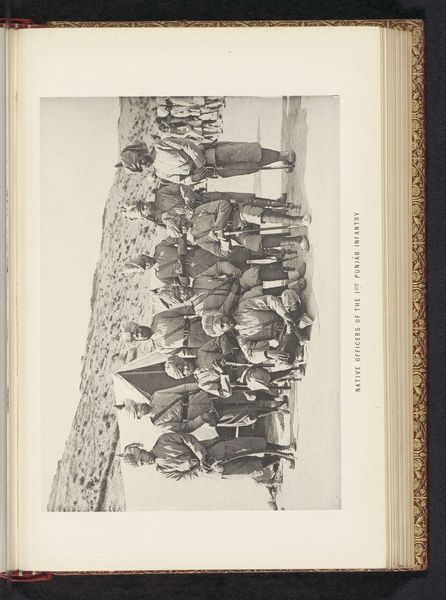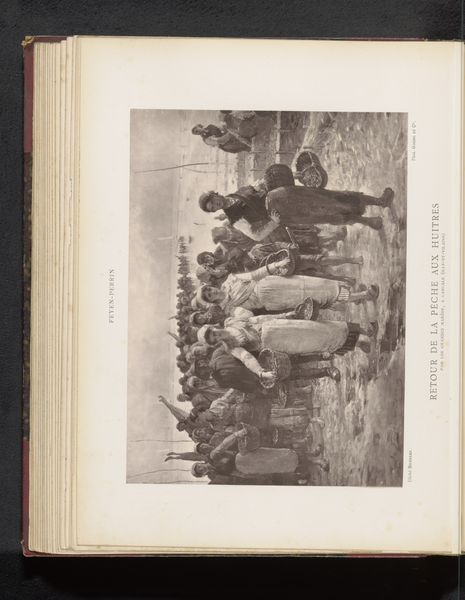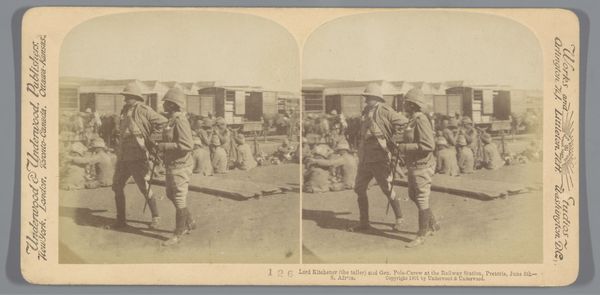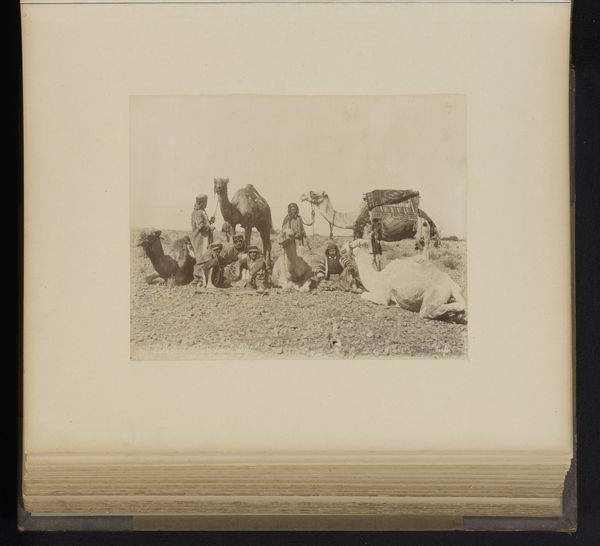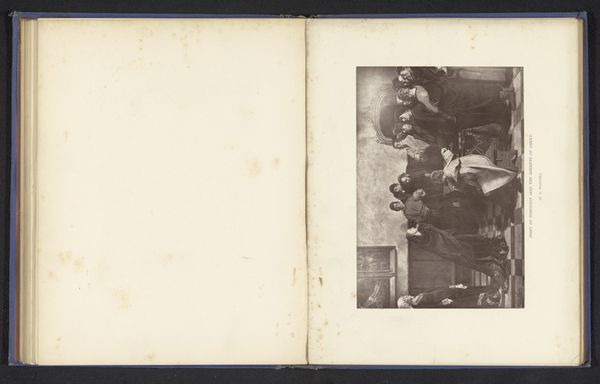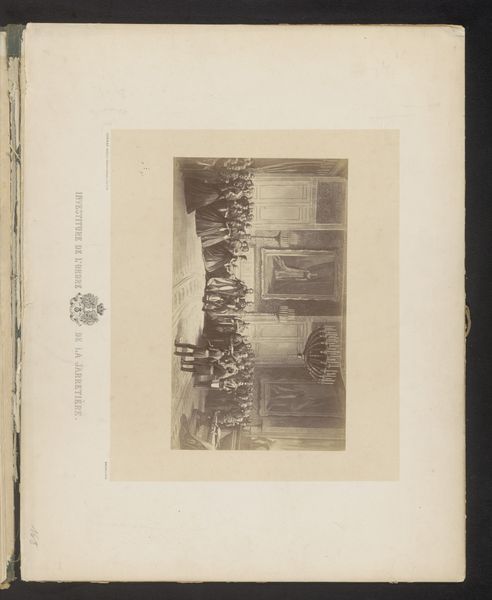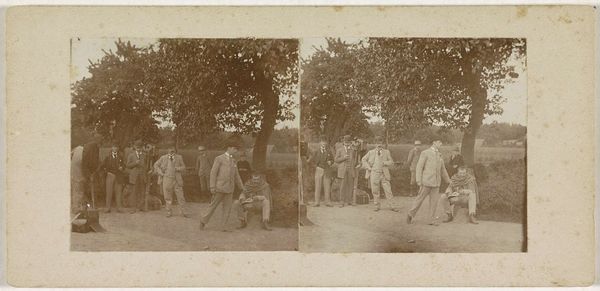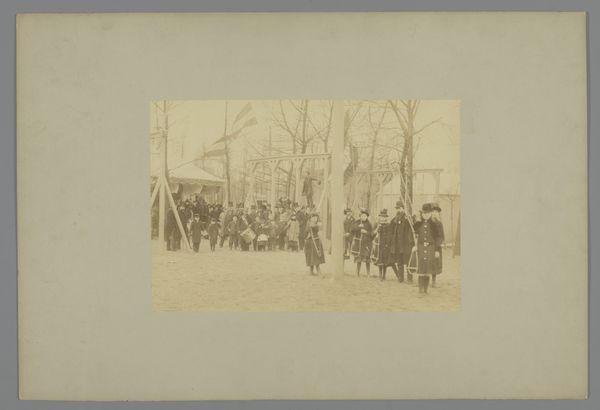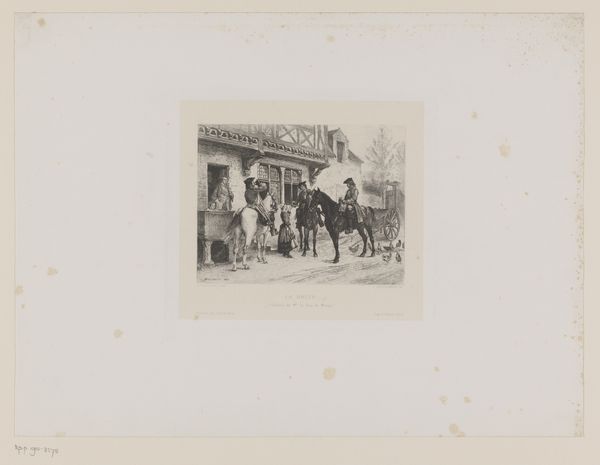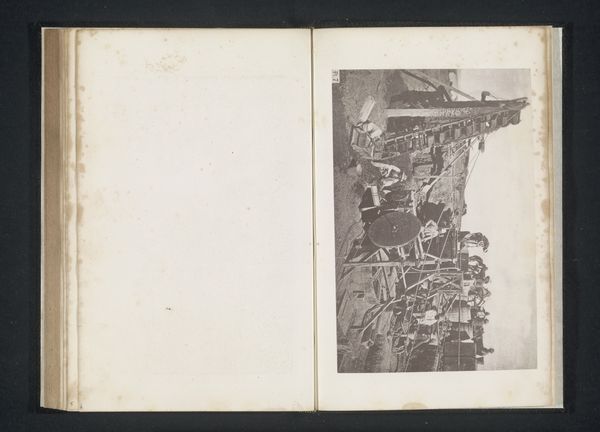
photography, gelatin-silver-print
#
portrait
#
photography
#
group-portraits
#
gelatin-silver-print
#
genre-painting
#
street
#
realism
Dimensions: height 102 mm, width 201 mm
Copyright: Rijks Museum: Open Domain
Editor: This gelatin-silver print, "Spelende jongens op straat," made before 1896, captures a candid moment of children at play. It has this great documentary feel. I’m immediately curious about the daily life and labour that shaped these children’s realities. What catches your eye? Curator: Well, let’s look at the means of production here. Gelatin-silver prints became more accessible during this period, shifting photographic production towards mass culture. Consider the labor involved – the photographers, the darkroom technicians, and even the industries that manufactured the materials themselves. How does that impact our interpretation of this everyday scene? Editor: It makes me think about how photography democratized representation, documenting lives often unseen in formal portraiture. This wasn't a commissioned piece, presumably? Curator: Precisely. And it highlights a crucial tension: the intersection of industrial processes and seemingly spontaneous moments. Who owned the means of representation, and how did that affect whose stories were told? Notice the clothing these boys are wearing – are they ready-made or homespun? This offers insight into the family economies at play. Editor: So you're saying we can interpret this image not just as a scene of play, but also as evidence of larger economic systems and social stratifications. Curator: Absolutely! And by understanding these systems, we can ask further questions about how art challenges or reinforces class structures through its modes of creation, distribution, and consumption. This shift in focus really challenges how we think about high art versus craft. Editor: That's fascinating. It’s much more layered than I initially thought! Thanks for pointing out those relationships. Curator: Indeed. It also reminds us of the labour and capital interwoven into even the simplest images. We must be careful not to divorce this seemingly candid moment from the processes that created and sustained it.
Comments
No comments
Be the first to comment and join the conversation on the ultimate creative platform.
